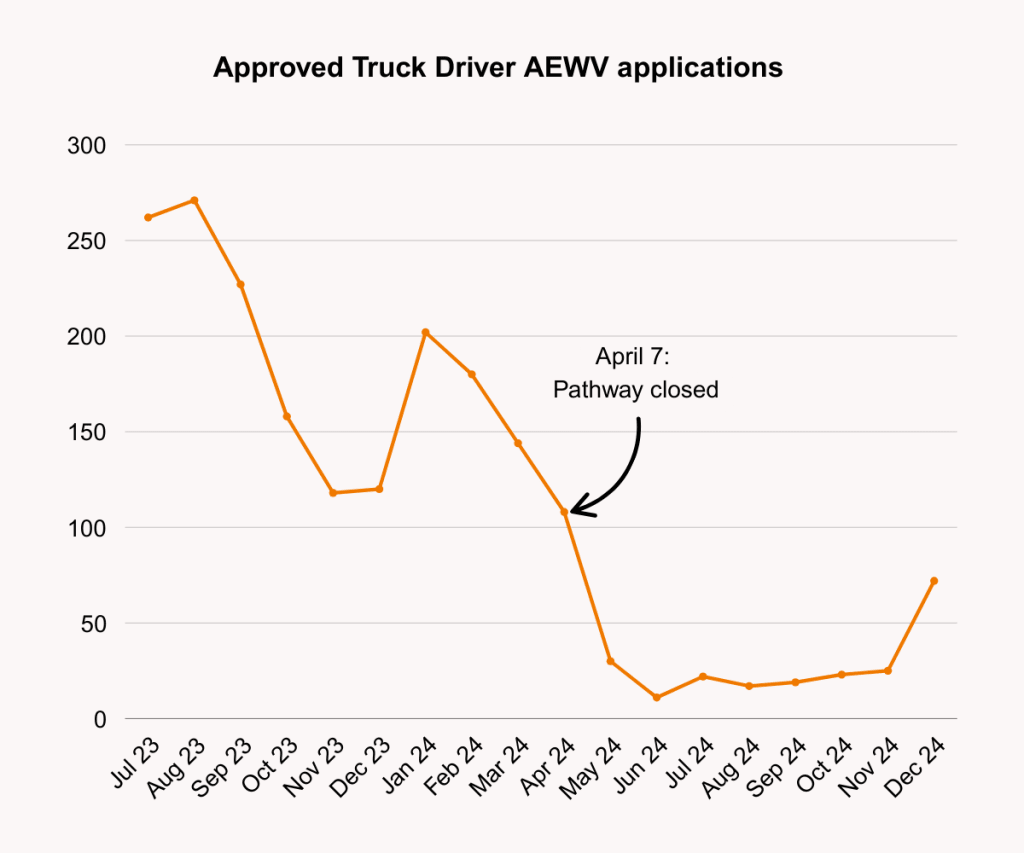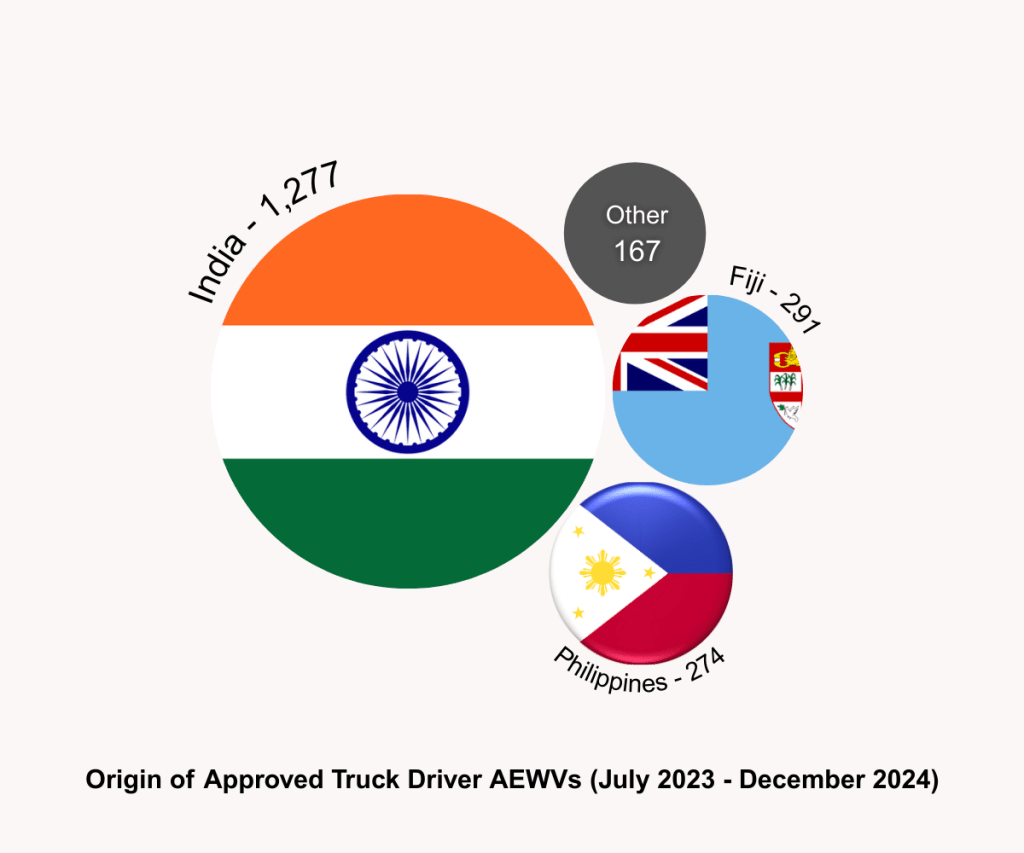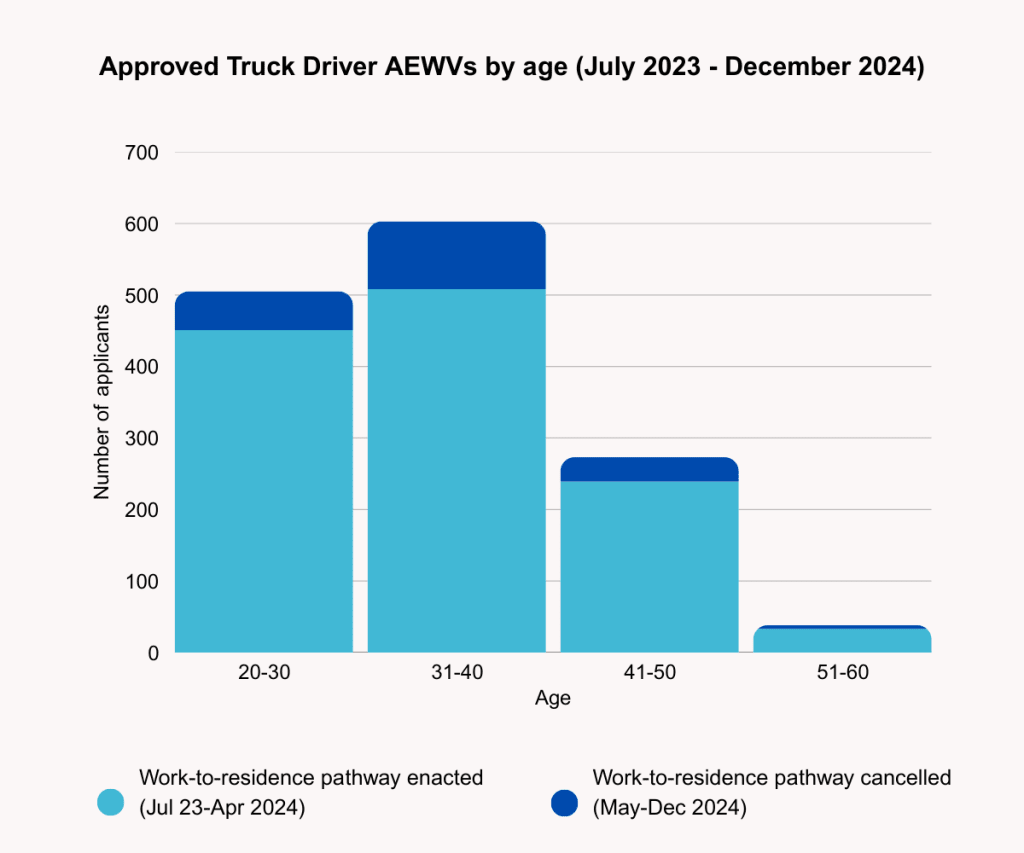
In recent years, the road freight industry has experienced a serious deficit of skilled drivers.
According to research commissioned by Transporting New Zealand, the sector was short an estimated 3,449 drivers in 2022. This figure may be an underestimate, as a lack of drivers puts firms off from buying more trucks.
The government responded to Transporting New Zealand’s advocacy by putting in place a temporary residence pathway to attract overseas drivers to New Zealand.
Announced in April 2023, the pathway allowed migrant drivers who primarily operate vehicles requiring class 4/5 licences to stay in the country permanently, rather than leave after two or three years as is usual under the Accredited Employer Work Visa (AEWV).
While we advocated for the pathway to be open to class 2 and 3 drivers as well, we acknowledged that the shortage of class 4 and 5 holders was the most important.
In April 2024, Immigration Minister Erica Stanford announced immediate changes to the AEWV scheme, including the closure of the work-to-residence pathway for drivers. MBIE reasoned the temporary measure had fulfilled its purpose as the demand for more truck drivers had been met.
We now have data from MBIE showing what happened over the residence pathway period, and what’s happened since it was closed.
Applications were already slowing; steeper decline after announcement
MBIE’s figures show that after a peak at the beginning of 2024, applications to be a truck driver in New Zealand were slowing month by month.
Upon the announcement that migrant drivers on an AEWV would no longer have a pathway to residency, there was a sharp fall in applications, down to a low of just 11 in June. Previously, “Truck Driver (General)” was the second largest occupation under the AEWV in 2023.
Significant number from India, Fiji and Philippines
India was by far the most common country of origin for truck drivers entering New Zealand on an AEWV. Fiji and the Philippines also delivered significant numbers of drivers.
Migrant drivers are relatively young compared with the local workforce. Most have been aged 31 to 40, closely followed by those aged 20 to 30. Having younger people entering the industry is good news, particularly when much of the local workforce is nearing retirement within the next two decades. The average age of a truck driver is 54, according to available data.
Keeping migrant drivers safe
One of the reasons the Immigration Minister said the pathway would end was due to concerns about worker exploitation. It is essential that all employers do their due diligence when hiring migrant drivers, particularly from labour hire agencies. Transporting New Zealand supported the transport sector agreement and the good work it did during acute post-Covid shortages. We continue to advocate for the government to reactivate it in the event of any future shortages.
Immigration is a valuable supplement to the driving workforce, but it’s never going to be a sustainable alternative to developing the local workforce. That’s why Transporting New Zealand supports the recent changes to driver licensing rules, more driver training in schools, and encouraging our members to get their drivers enrolled in MITO courses to invest in their professional development.
Prioritising diversity and inclusion can also help businesses attract more staff with a range of skills, among other benefits.
- Check out our Diversity Toolbox which is full of free resources about recruiting a diverse local workforce.








